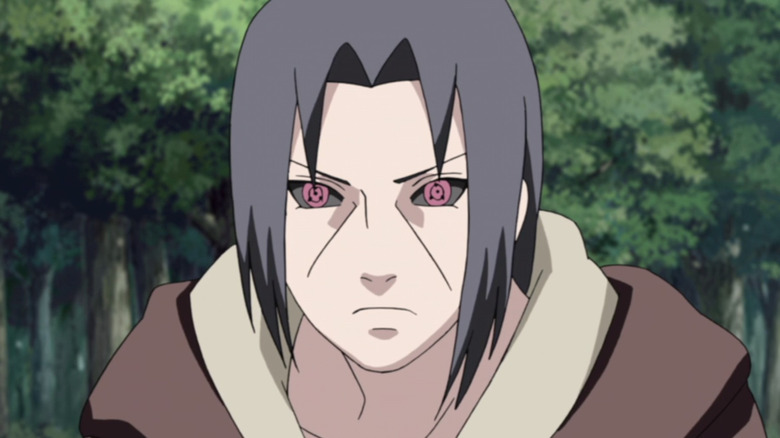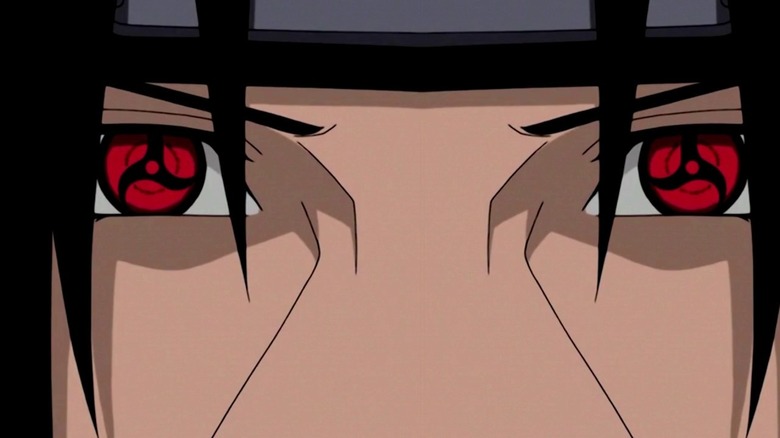Is Naruto's Itachi A God? What Shinto Beliefs Can Tell Us
Itachi Uchiha has long been a fan-favorite character in "Naruto," mastering the Sharingan at a young age to reach almost god-like levels of strength. However, fans may not know that famed manga artist Masashi Kishimoto took inspiration from Shinto, Japan's oldest religion, for many of the Uchiha clan's powers.
Shinto centers around two deities, Izanami and Izanagi, creators of other gods and the islands of Japan. After Izanami's death, Izanagi searched for any way to resurrect his sister, but all proved fruitless. A heartbroken Izanagi washed away his sins, bringing the major Shinto gods into existence. Amaterasu, the sun goddess, was born when he washed his left eye. Tsukuyomi, the moon god, came from Izanagi's right eye, and Susanoo, the storm god, was born from Izanagi's nose.
Those names should sound familiar to any "Naruto" fan, as Kishimoto named all of Itachi's iconic powers after Shinto's "Three Precious Children." Clearly, the legendary manga artist used Itachi to represent Izanagi within "Naruto," but outright labeling him a god is something only Kishimoto himself could do. Itachi's power puts him toward the top of the strongest members of the Uchiha Clan, joining Sasuke and Madara with god-like or near-god-like powers.
Itachi's Sharingan comes straight from Shinto
Itachi Uchiha's Mangekyou Sharingan puts him near the top of the most powerful shinobi in "Naruto," and his elevated Kekkei Genkai allows him to call upon the powers of Izanagi's children against any opponent.
From his right eye, Itachi can activate Amaterasu, creating an endlessly burning black flame in any location. Although the Amaterasu present in Shinto doesn't boast a black fire, she is the sun goddess, making her one of the religion's most important deities. It's clear Masashi Kishimoto wanted to showcase the strength of Amaterasu in "Naruto," using the goddess's name for a fire strong enough to burn through anything. From his left eye, Itachi calls upon the Tsukuyomi. This genjutsu creates a physically and mentally harmful illusion in which he controls space and time, allowing Itachi to torture victims endlessly while only seconds of actual time has passed. Little is known of Shinto's Tsukuyomi, but Kishimoto giving Itachi the powers of endless nights seems fitting for the moon god.
Using both eyes, Itachi brings the Susanoo forward, creating a massive chakra-based avatar. The strongest Mangekyou Sharingan ability, the Susanoo takes direct inspiration from Shinto, even wielding god-like weapons during battle. During Itachi's final battle with Sasuke, he uses the Susanoo to kill Orochimaru, who appears in a serpent-like form. While fitting for the series, this is another direct reference to Shinto and the legend of Susanoo, who famously killed a monstrous serpent.

